#National Green Tribunal guidelines enforcement
Explore tagged Tumblr posts
Text
Jamshedpur Intensifies Fight Against Illegal Mining
New Task Force to Enforce Stricter Regulations and Conduct Regular Raids District officials launch comprehensive strategy to combat unauthorized mining activities, protect revenue, and ensure environmental compliance. JAMSHEDPUR – A newly established task force has been established by local authorities to implement a comprehensive campaign to prevent illegal mining operations and enforce…
#जनजीवन#brick kiln revenue collection#District Mining Task Force operations#environmental protection in mining#forest department coordination#Jamshedpur illegal mining crackdown#Life#mining royalty collection#National Green Tribunal guidelines enforcement#sand ghat regulation#Sustainable Mining Practices#vehicle overloading prevention
0 notes
Text
TSA Legal | Top Law Firms In Gurgaon | Corporate Lawyers in Delhi
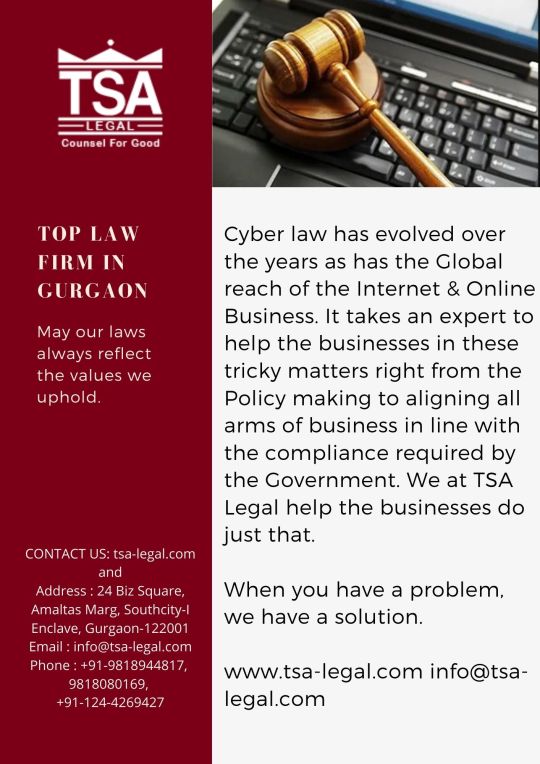
TSA LEGAL ADVOCATES & SOLICITORSAggressive representation; personalised attention
At the Law Offices of TSA-Legal, we are committed to the businesses & individuals who seek legal help and assistance. TSA-Legal with its experience, knowledge and domain expertise serves its clients with the best advisory & counselling. All our lawyers & Experts are passionately dedicated towards our clients’ success. The team at TSA-Legal has extensive knowledge in Business Law, Intellectual Property Rights, Cyber Law, Artificial Intelligence, International Law, and Business Litigation & Arbitration. We proudly serve the Technology & IT Companies, Start-ups & Small businesses.
20 DECADES OF EXPERIENCE
100 CLIENTS & COUNTING
12 CITIES WHERE CLIENTS S
MEET THE TEAMInsightful counsel, inspired representation
R.S. Yadav
With over Three Decades of Experience in Civil & Criminal Litigation, Mr. R.S.Yadav has helped clients in matters ranging from Business Law to Environmental Law before Hon’ble Supreme Court of India, Hon’ble High Court of Delhi, Hon’ble High Court of Rajshthan, Hon’ble High Court of Uttarakhand, Hon’ble High Court of Uttar Pradesh, Hon’ble High Court of Maharashtra, Hon’ble National Green Tribunal and various District Courts. In the past 30 years Mr. R.S.Yadav has counselled numerous clients in Mergers, Acquisitions & Transition including International trade.
Dr. R.S. Taxak
Over three decades of experience in Insurance including Consumer Insurance serving Government of India at the highest level while helping the Government to chart guidelines for the Sector. His expertise helps clients in navigating the tricky matters of Liability & Claims Management and Consumer Grievance. His experience in dealing with some of the largest Corporations in the country and helping the government in investigating the farcical claims which subsequently led to saving of Crores of Rupees per year is a testament of the impeccable knowledge and insight.
Abbhinav Thakshak
With an Engineering background and a successful Entrepreneurial foray, Abbhinav Thakshak has over 20 years of Diverse Experience into Business, Law, IPR, and Environment & Sustainability. His Counsel has been sought in matters ranging from IPR, Cyber Security, AI, and Environmental Law & Sustainability. He has helped & given crucial consultations to Global Clients including Fortune 1000 Companies in Compliance Management, IPR Management, and Business Strategy & Expansion.
Rajeev Yadav
Mr.Rajeev has more than 20 years of experience in Civil and Criminal Law. He has represented clients before the District and Sessions Courts in National Capital Region, High Court of Delhi, Supreme Court of India and before various Legal Tribunals. He specializes in liaising with various law enforcement agencies on behalf of clients while providing insightful opinion on various legal & contractual aspects.
Veenita Soharu
HR Professional with more than 15 years of experience in HR & Legal Compliance for the MNCs & Start-ups, Veenita has helped Global Businesses in aligning their Indian Operations by Designing, Drafting & Executing the most robust Policies in Employee Management, Contract Management & Labour Law related issues. She has been awarded for her innovative approach & diligent handling of sensitive corporate issues.
R.Nitesh
More than 10 years of experience in Innovation management & 2 Patents to his name, makes Nitesh the best there is in ‘IP and Competitive & Scientific Intelligence’. • His specialization in FMCG and Consumer Health categories including oral health, skin health, nutrition and wellness categories has helped Global Clients in creating immense value in Research & Development. His unique multidisciplinary academic background in Science, Law, IP and Technology Management has come in handy in the past for the clients like Consumer healthcare organizations and Pharma giants worldwide.
Gagan Jena
Gagan, has a vast experience in Litigation Support and Commercial Law. He has successfully demonstrated his analytical skills during drafting and vetting Corporate Contracts & Agreements for clients that have helped clients during the litigation and finally becoming the fulcrum on which the cases have been favourably judged for our clients. Being a Litigating counsel for Family Law, Mr. Gagan represented clients before Hon’ble Supreme Court of India, Hon’ble High Court of Delhi, Hon’ble High Court of Haryana, Hon’ble National Green Tribunal and various District Courts.
Krishan Yadav
Krishan is the Young Lawyer who has been involved in advising clients North India. His expertise has been sought by clients on employment law matters, such as incompatibility and incapacity issues, disciplinary proceedings, as well as labour litigation matters at the Commission for Conciliation, Mediation and Arbitration and the Labour Court and trials. He also advises clients on small and large scale retrenchments. He has also assisted clients by imparting training for a number of clients on wide range of employment law topics including internal hearings, sexual harassment and POPI (Protection of Personal Information Act)
Mohan S Dadwal
One of the More Experienced Lawyers at the firm, Mr . Dadwal brings a decade long experience to the table. He enriches the clients with an in-depth analysis and insightful advisory that goes a long way in strategising the way froward especially in matters related to ADR, Civil Law, Insurance Law, Property laws and Family law. He has extensive experience in representing clients in Hon’ble High Courts of Delhi, Haryana & Himachal Pradesh along-with district courts in these states.
Kashyap K Dwivedi
A Management Professional with MBA from UK and a Law Degree from prestigious Delhi University, Kashyap has extensive experience of a decade in Corporate world while helping some of the biggest names in Corp India in their Legal Challenges especially in Criminal/Civil Law, Commercial laws, IPR and charting through ADR. He is a practicing Lawyer in Hon’ble Supreme Court of India
TSA Legal is one the top law firms in Gurgaon and Delhi NCR with a group of experienced criminal and civil lawyers. Hire the best corporate lawyers now!
Visit at :- https://tsa-legal.com/
0 notes
Text
09-05-2020 Current affairs & Daily News Analysis
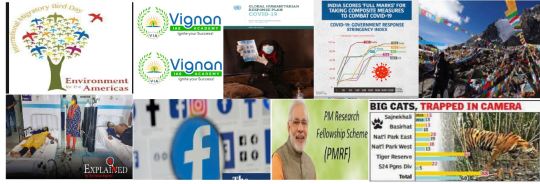
Environment for the Americas Launches World Migratory Bird Day 2020 This year the theme of World Migratory Bird Day is “Birds Connect Our World” to highlight the importance of conserving the ecological connectivity that support the natural movements of migratoy birds.
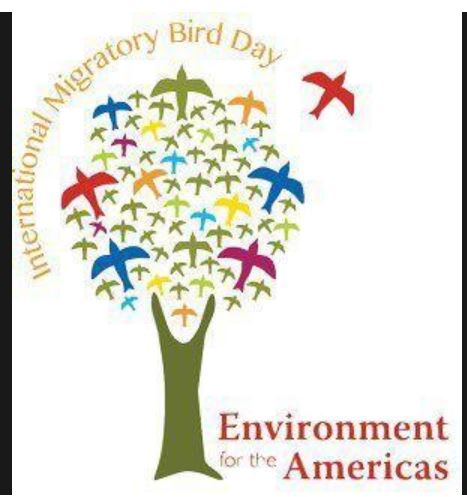
About: What is it? WMBD is an annual awareness-raising campaign highlighting the need for the protection of migratory birds and their habitats. History: The annual day was initiated in 2006. Day of Observance: Since 2018, it is celebrated twice a year, on the second Saturday in May and in October. Who organizes WMBD? The campaign is organized by two international wildlife treaties administered by the United Nations Environment Programme (UNEP) – the Convention on the Conservation of Migratory Species of Wild Animals (CMS), and the African-Eurasian Migratory Waterbird Agreement (AEWA) - together with Environment for the Americas (EFTA). Source : United Nations ( Environment ) Read UPSC Current affairs and Daily News Analysis from Best IAS Coaching in Bangalore Vignan IAS Academy Global Humanitarian Response Plan: COVID-19 (April – December 2020) GHRP May Update The United Nations and partner agencies have launched a 6.7 billion US dollar global appeal to fight the COVID-19 pandemic, more than trebling an earlier appeal made by the UN chief.
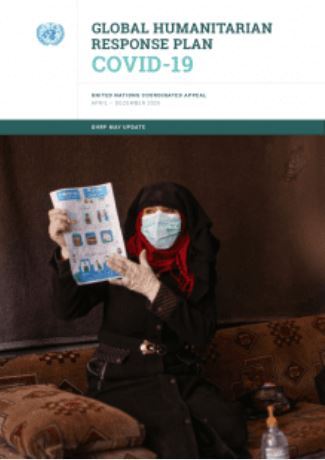
About: The COVID-19 Global Humanitarian Response Plan was launched on March 25th, but with humanitarian needs rising, the plan is calling for an injection of 6.7 billion US dollars for the remainder of 2020. The plan puts special focus on more vulnerable countries and combating food insecurity and gender-based violence. The updated appeal adds nine vulnerable countries to the 54 nations covered in the initial appeal -- Benin, Djibouti, Liberia, Mozambique, Pakistan, the Philippines, Sierra Leone, Togo and Zimbabwe. Source : The Hindu ( International ) Read UPSC Current affairs and Daily News Analysis from Best IAS Coaching in Bangalore Vignan IAS Academy Coronavirus: India rates '100' on Stringency Index A Stringency Index created by Oxford University shows how strict a country’s measures were responding to the Covid-19 outbreak, and at what stage of the spread it enforced these.
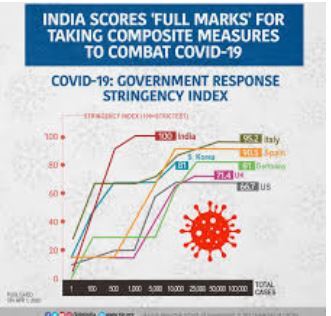
About: It is among the metrics being used by the Oxford COVID-19 Government Response Tracker. It tracks 17 indicators of government response. These indicators examine containment policies such as school and workplace closings, public events, public transport, stay-at-home policies. The Stringency Index is a number from 0 to 100 that reflects these indicators. A higher index score indicates a higher level of stringency. Important Info : Key findings on India: The Stringency Index has found that India indeed had one of the strongest lockdown measures in the world — at a 100 score since March 22.It was relaxed slightly on April 20 after the government eased norms for certain workplaces in regions outside the red zones.In countries such as the UK, the US, and India, the Oxford graphs find that the death curve has not flattened after strictest measures were enforced. Source : Indian Express ( Polity & Governance ) Read UPSC Current affairs and Daily News Analysis from Best IAS Coaching in Bangalore Vignan IAS Academy INSTITUTE OF NUCLEAR MEDICINE & ALLIED SCIENCES (INMAS) Personal Protective Equipment (PPE) designed and produced by Indian Navy has been tested by INMAS and is certified to be mass produced and used in clinical COVID situations. INMAS is a DRDO organization tasked with testing and certification of PPE.
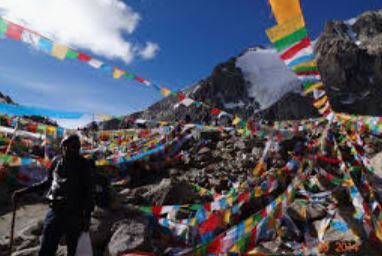
About: Parent Body: INMAS is a laboratory of the Defence Research and Development Organisation (DRDO). Established in: 1961. Location: New Delhi. Important Info : Mandate: This multidisciplinary laboratory is engaged in R&D activities in the field of Radiation, Imaging Sciences, CBRN technologies, Nuclear medicine research and responding to nuclear accidents and explosions.Since 1960s it offers a two-year diploma in radiation medicine, making it the first formal training program in nuclear medicine in the world.A major development in the recent past has been the establishment of NMR, PET-Cyclotron facility that has contributed towards development of technologies for enhancing combat efficiency besides providing clinical research to the Armed forces. Source : All India Radio ( Science & Technology ) Read UPSC Current affairs and Daily News Analysis from Best IAS Coaching in Bangalore Vignan IAS Academy Now you can drive to Kailash Mansarovar from Delhi; first batch flagged off Defence Minister inaugurated the Link Road to Kailash Mansarovar via video conferencing. This link road was constructed by Border Roads Organization (BRO). About: The link road connects Dharchula to Lipulekh (China Border) which is known as Kailash-Mansarovar Yatra Route. The Darchula – Lipulekh road is an extension of Pithoragarh-Tawaghat-Ghatiabagarh road. It originates from Ghatiabagarh and terminates at Lipulekh Pass, the gateway to Kailash Mansarovar. In this 80 Km road, the altitude rises from 6000 feet to 17,060 feet. At present, the travel to Kailash Mansarovar takes around two to three weeks through Sikkim or Nepal routes. Lipulekh route had a trek of 90 Km through high altitude terrain and the elderly yartris faced lot of difficulties. Now, this yatra will get completed by vehicles. Important Info : Mount Kailash? Mount Kailash is a 6,638 m high peak in the Kailash Range (Gangdise Mountains), which forms part of the Transhimalaya in the Tibet Autonomous Region of China.The mountain is located near Lake Manasarovar and Lake Rakshastal, close to the source of some of the longest Asian rivers: the Indus, Sutlej, Brahmaputra, and Karnali/Ghaghara. Source : All India Radio ( Geography ) Read UPSC Current affairs and Daily News Analysis from Best IAS Coaching in Bangalore Vignan IAS Academy What are the safeguards against chemical disasters in India? A gas leak from LG Polymers factory situated on the outskirts of Visakhapatnam, Andhra Pradesh killed at least 11 people. The law in India provides protection to victims of such chemical disasters.

Here’s a look at some of these provisions: Bhopal Gas Leak (Processing of Claims) Act, 1985 gives powers to the central government to secure the claims arising out of or connected with the Bhopal gas tragedy. The Environment Protection Act, 1986 gives powers to the central government to undertake measures for improving the environment and set standards and inspect industrial units. The Public Liability Insurance Act, 1991 is an insurance meant to provide relief to persons affected by accidents that occur while handling hazardous substances. Under the National Environment Appellate Authority Act, 1997, the National Environment Appellate Authority (NEAA) can hear appeals regarding the restriction of areas in which any industries shall not be carried out or shall be carried out subject to certain safeguards under the Environment (Protection) Act, 1986. National Green Tribunal, 2010, provides for the establishment of a National Green Tribunal for expeditious disposal of cases related to environmental protection and conservation of forests. Source : Indian Express ( Disaster Management ) Read UPSC Current affairs and Daily News Analysis from Best IAS Coaching in Bangalore Vignan IAS Academy Facebook's "Supreme Court", New Oversight Board, Can Overrule Zuckerberg Facebook’s new oversight board — similar to an independent, internal court — has chosen National Law School of India University (NLSIU) Vice-Chancellor Sudhir Krishnaswamy as one of its first 20 members.

About: Working: The board will make final and binding decisions on what content should be allowed or removed from Facebook and Instagram, based on respect for freedom of expression and human rights. Power: All decisions taken by the board will be implemented by Facebook as long as they do not violate the law. Significance: To moderate content posted on social media platforms, Facebook’s oversight board represents a new model of content moderation for Facebook and Instagram. Notably, the Board will review content referred to it by both users and Facebook Composition: The board comprises of 20 independent Members from over 27 countries which includes former heads of state, judges, journalists, human rights rapporteurs etc. Removal of Members: the board members are independent of the company, and cannot be removed by Facebook based on their decisions. Important Info : Sudhir Krishnaswamy? Sudhir Krishnaswamy is the India Vice-Chancellor of the National Law School of India University.He is also co-founder of the Center for Law and Policy Research, an advocacy organization that has substantially advanced the rights of LGBTQ+ and transgenders in India through impact litigation. Source : Indian Express ( Polity & Governance ) Read UPSC Current affairs and Daily News Analysis from Best IAS Coaching in Bangalore Vignan IAS Academy PRIME MINISTER’S RESEARCH FELLOWSHIP (PMRF) SCHEME Union HRD Ministry has recently carried out various amendments in Prime Minister’s Research Fellowship Scheme to boost research in the country.
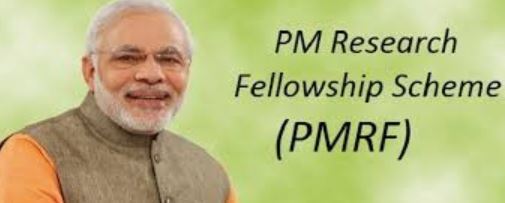
Key Amendments: To boost research, a dedicated Division is being created in the ministry with the name of "Research and Innovation Division". This division will be headed by a director who will be coordinating research work of various institutions coming under MHRD. Now for the students from any recognised institute/ university (other than IISc/ IITs/NITs/IISERs/IIEST/CF IIITs), the requirement of GATE Score is reduced to 650 from 750 apart from minimum CGPA of 8 or equivalent. Starting Academic Year 2020-21, there will be two channels of entries, one direct entry and lateral entry. In lateral entry, the students, who are pursuing PhD in PMRF granting institutions can also apply to become fellow under the scheme as per new guidelines. Important Info : Background: The Prime Minister’s Research Fellows (PMRF) Scheme has been designed for improving the quality of research in various higher educational institutions in the country. With attractive fellowships, the scheme seeks to attract the best talent into research.The scheme was announced in the Budget 2018-19.The institutes which can offer PMRF include all the IITs, all the IISERs, Indian Institute of Science, Bengaluru and some of the top Central Universities/NITs that offer science and/or technology degrees. Source : PIB ( Science & Technology ) Read UPSC Current affairs and Daily News Analysis from Best IAS Coaching in Bangalore Vignan IAS Academy TIGER POPULATION IN SUNDERBANS According to the latest estimation of tiger numbers in the Indian Sunderbans by the West Bengal Forest Department, the tiger count for the year 2019-20 rose to 96, from 88 in 2018-19.
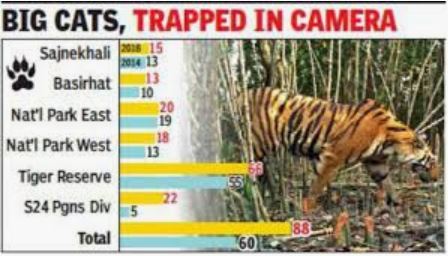
About: The Sunderbans delta, spread over India and Bangladesh, is the only mangrove forest in the world inhabited by tigers. The increase in the number by eight was significant as it was the biggest annual jump reported from the Sunderbans. The Sunderban mangrove forest is spread over 2,585 sq. km and includes the Sundarban Tiger Reserve and the 24 Parganas (South) Division. Estimation of the number of tigers in the Sunderbans, a world heritage as well as a Ramsar site, has always been a challenge because of the difficult terrain that comprises dense mangrove forests, with creeks and rivulets, and floods twice a day during the high tides. Source : The Hindu ( Environment ) Read UPSC Current affairs and Daily News Analysis from Best IAS Coaching in Bangalore Vignan IAS Academy CENTRE OF EXCELLENCE FOR COIR APPLICATIONS Coir Board signed a MoU with the Indian Institute of Technology (IIT)-Madras, to establish a Centre of Excellence for Coir Applications. About: The Centre of Excellence aims at furthering the research work done so far in the coir sector with the support of IIT, Madras. It will also support the development of relevant technology and evolve standards for production and processing through specific projects and monitor research projects. Coir Board will provide a financial assistance of 5 crore rupees initially for a period of two years for the establishment and running of the Centre of Excellence. Important Info : Coir Board? The Coir Board is a statutory body established by the Government of India under the Coir Industry Act 1953 for the promotion and development of the coir (coconut fibre) industry in India.It is based in Kochi and Alappuzha.The board functions under the Ministry of Micro, Small and Medium Enterprises (MSME). Source : All India Radio ( Economy) Read UPSC Current affairs and Daily News Analysis from Best IAS Coaching in Bangalore Vignan IAS Academy Read UPSC Current affairs and Daily News Analysis from Top IAS Academy in Bangalore Vignan IAS Academy Daily Current affairs and News Analysis Best IAS Coaching institutes in Bangalore Vignan IAS Academy Contact Vignan IAS Academy Enroll For IAS Foundation Course from Best IFS Academy in Bangalore Read the full article
#09-05-2020VignanIASCurrentAffairs#BestIASAcademyinBangalore#topiascoachinginbangalore#Top5IASCoachinginBangalore#TopIASInstitute
0 notes
Text
NGT directs states, UTs to enforce guidelines on regulation of banquets and marriage halls | India News - Times of India
NGT directs states, UTs to enforce guidelines on regulation of banquets and marriage halls | India News – Times of India
[ad_1]
NEW DELHI: The National Green Tribunal has directed all the states and union territories to enforce guidelines on the regulation of banquets and marriage halls and ensure adequate parking facility, disposal of solid and liquid waste. A bench headed by NGT Chairperson Justice A K Goel asked all the states and UTs to take further steps for adopting and enforcing the Central Pollution Control…
View On WordPress
#Breaking news#Google news#India#India news#India news today#Liquid waste#mahipalpur#sustainable use#The National Green Tribunal#Today news
0 notes
Text
Call for papers: International Symposium on Environmental Justice and Sustainable Development Goals
The Sustainable Development Goals (SDGs) are imbued with concern for environmental justice. Almost every goal – from ending poverty to combating climate change to revitalizing global partnerships – is dependent on enhancing environmental justice. Goal 16, in particular, with its emphasis on access to justice and effective, accountable and inclusive institutions, highlights the strong connections between sustainable development and environmental justice.
We invite papers on one or more of the SDGs and various aspects of environmental justice, such as:
Procedural justice: Opportunities for participation in the political and legal processes that create and manage environmental policy, e.g., public interest litigation (PIL), community involvement in environmental impact assessment;
Distributive justice: Equity in the distribution of risks, benefits and costs of environmental decision making;
Recognitional justice: Recognition of the diversity of participants and experiences in affected communities, including non-human species and abiotic parts of the ecosphere; and
Restorative justice: Attempts made to mitigate or re-mediate adverse impacts on people and the environment, e.g., enforcement of licensing conditions, rehabilitation and resettlement policies.
The sub-themes for the symposium are as follows:
Use and abuse of the public interest litigation (PIL);
Innovative policies and programs of the government or state for enhancing distributive justice;
Legislative or policy analysis, including formulation, implementation or enforcement;
Executive challenges for implementing court judgements;
Progress and challenges for achieving sustainable development goals (SDG 16) related to environmental justice;
Assessing international capacity building programmes;
Empirical field-based case studies;
Gender analysis of processes, institutions, and outcomes;
Historical reviews of legislation, policy, institutions or jurisprudence;
Institutional analysis of specialized green courts and environmental tribunals;
Indigenous institutions and governance for environmental justice;
Alternative dispute resolution systems for environmental conflicts;
Monitoring SDG indicators for environmental justice; and
Theoretical, conceptual and methodological aspects
We encourage abstract submissions that are relevant to the above themes and sub-themes i.e., those that focus on the interactions between Environmental Justice and the United Nations Sustainable Development Goals.
All abstracts must be submitted by no later than February 8th 2019, at midnight (Indian Standard Time).
We do not anticipate an extension beyond that date and strongly encourage you to submit your abstracts well before the deadline!
Abstracts will be reviewed by a committee of interdisciplinary scholars in the order they are received. Based on the academic rigor, relevance to conference theme, and innovativeness of the content, abstracts will be selected for the limited spots available for the presentation in the conference.
To facilitate early registration and travel planning, the decision notifications regarding acceptance of abstracts to authors will be sent by February 15th, 2019.
Abstracts must be submitted electronically by email to [email protected]
Authors of accepted abstracts are invited to submit, by March 8th 2019, a full paper (maximum 5,000 words) that will be included in the conference materials. A selection of these papers will be considered for inclusion in a peer-reviewed edited volume and a special issue of the GNLU Journal of Law Development and Politics.
Guidelines for Abstracts
Abstracts should be in paragraph form, without bullet points, and should be no more than 300 words. Additionally, the abstract body should include details regarding the background, purpose, methods, results, and conclusions. Please also indicate the theory/analytical framework for the work and provide a description of the research methods used. Contributors are expected to explore the philosophical significance of the questions emerging within the scope of each theme.
Registration Fees
Indian Foreign
(US $)
Registration (covers conference material and food) Professionals and academicians Rs. 5000 $70 Local NGOs and community workers Rs. 3000 $70 Graduate students Rs. 1500 $70 On-campus accommodation VIP Guesthouse (AC): Single room Rs. 1700 $25 VIP Guesthouse (AC): Double (shared) room Rs. 2300 $35
Participants should send their registration fees, after acceptance of their abstracts, by Crossed Demand Draft in favour of the Registrar, Gujarat National Law University, Gandhinagar. Please write your name and the title of the symposium on the reverse side of the draft or online payment link.
Click HERE for online Payment of Registration Fee
Click HERE for online Registration Form:
Important Dates
Last date for submitting abstract: 8th February 2019.
Notification of acceptance of abstract: 15th February 2019.
Last date for registration: 8th March 2019.
PLEASE NOTE: Individuals are limited to serving as a presenter on only one paper but this does not preclude being a co-author on other papers.
Contact
Please email [email protected] if you have any questions.
For more details, refer symposium
Tweet
The post Call for papers: International Symposium on Environmental Justice and Sustainable Development Goals appeared first on SCC Blog.
Call for papers: International Symposium on Environmental Justice and Sustainable Development Goals published first on https://sanantoniolegal.tumblr.com/
0 notes
Link
On Oct. 12, six Democratic senators wrote U.S. Secretary of Education Betsy DeVos to ask her to delay proposed Education Department regulations governing Title IX.
The letter asked Secretary DeVos a series of questions, including two that were particularly relevant to FIRE. First they asked for “a list of all organizations, advocates, and experts that have been consulted in the process of developing [a notice of proposed rulemaking] thus far.” They also requested that the Secretary “provide the analysis behind the Department’s determination that the former Title IX guidance was ‘widely criticized’ and a ‘failed system.’”
Because FIRE was one of the organizations that provided input to the Department and because we value transparency, we sent the Senators a letter to emphasize that the input we provided the current administration was consistent with the input we provided the Department during the Obama administration, and was the same input we have repeatedly provided to Congress and the public.
In order to keep the letter to a manageable length, though, we did not seek to set forth the extensive evidence behind the Department’s assessment that the prior approach was “widely criticized” and “failing.” It is important, however, to demonstrate the magnitude of that evidence for the public record. So here, in longer form, we are posting the evidentiary support for our statement to the Senate Democrats that our “concerns about the erosion of procedural protections have been subsequently echoed by a diverse range of widely respected organizations, individuals, legal scholars … and an increasing number of state and federal courts.”
Specifically, here is just a small sample of materials that highlight the shortcomings of the prior approach, showing it was “widely criticized”:
Shikha Dalmia, Betsy DeVos is absolutely right about campus sexual assault rules, The Week (Sept. 13, 2018).
Alice B. Lloyd, Can New Guidelines Restore Due Process on College Campuses?, The Weekly Standard (Aug. 31, 2018).
Lauretta Brown, Megyn Kelly: Obama-Era Rules on Sexual Assault Complaints Eroded Due Process Rights on Campuses, Townhall (Aug. 31, 2018).
Rich Lowry, Fixing the Kangaroo Courts, National Review (Aug. 31, 2018).
Robby Soave, Betsy DeVos Plans to Overhaul Title IX, Focus on Due Process for Accusers and the Accused, Reason (Aug. 28, 2018).
Stuart Taylor & KC Johnson, End the Bias in Campus Sexual-Misconduct Tribunals, Real Clear Politics (Feb. 2, 2018).
Ben Trachtenberg, How University Title IX Enforcement and Other Discipline Processes (Probably) Discriminate Against Minority Students, Nevada Law Journal (Jan. 19, 2018).
Lara Bazelon, DeVos Has Rescinded College Sexual Assault Guidelines. What Now?, The American Prospect (Oct. 10, 2017).
The Trump administration’s approach to rape on campus is welcome, The Economist (Sept. 14, 2017).
Ross Douthat, Liberalism and The Campus Rape Tribunals, The New York Times (Sept, 13, 2017).
Justin Dillon & Matt Kaiser, Lawyers: DeVos is bringing due process to campus sexual assault cases, The Washington Post (Sept. 11, 2017).
Mark Joseph Stern, One Cheer for Betsy DeVos, Slate (Sept. 11, 2017).
Cathy Young, Betsy DeVos is right about campus sexual assault, CNN (Sept. 11, 2017).
Jeannie Suk Gersen, Betsy DeVos, Title IX, and the “Both Sides” Approach to Sexual Assault, The New Yorker (Sept. 8, 2017).
The Washington Post Editorial Board, Betsy DeVos’s remarks on campus sex assault were right on target, The Washington Post (Sept. 8, 2017).
Christina Hoff Sommers, Protecting Due Process in Sexual-Assault Cases on Campus, The Chronicle of Higher Education (Sept. 8, 2017).
Emily Yoffe, The Uncomfortable Truth about Campus Rape Policy, The Atlantic (Sept. 6, 2017).
Elizabeth Bartholet, Nancy Gertner, Janet Halley & Jeannie Suk Gersen, Fairness For All Students Under Title IX (Aug. 21, 2017).
John Villasenor & Lara Bazelon, Colleges Should Change How They Handle Sexual Assault, The Washington Post (July 27, 2017).
American College of Trial Lawyers White Paper on Campus Sexual Assault Investigations, (March 2017).
KC Johnson & Stuart Taylor, The Dangers of Gutting Due Process in Campus Sexual Assault Cases, The Washington Post (Jan. 30, 2017).
Tamara Rice Lave, Campus Sexual Assault Adjudication: Why Universities Should Reject the Dear Colleague Letter, Kansas Law Review (July 6, 2016).
Conor Friedersdorf, How Sexual-Harassment Policies Are Diminishing Academic Freedom, The Atlantic (Oct. 20, 2015).
Open Letter from Penn Law Faculty, Philadelphia Inquirer (Feb. 18, 2015).
Janet Halley, Trading the Megaphone for the Gavel in Title IX Enforcement, Harvard Law Review (Feb. 18, 2015).
Nancy Gertner, Sex, Lies and Justice, The American Prospect (Jan. 12, 2015).
Peter Berkowitz, The Demise of Due Process on Campus, Real Clear Politics (Dec. 26, 2014).
28 members of Harvard Law Faculty, Rethink Harvard’s sexual harassment policy, Boston Globe (Oct. 15, 2014).
Judith Shulevitz, Accused College Rapists Have Rights, Too, The New Republic (Oct. 11, 2014).
Anna Green & Donna Plotts, AAUP Committee on Women in the Profession’s Letter, (June 6, 2013).
Gwendolyn Bradley, Sexual Harassment Guidelines, AAUP (Nov.–Dec. 2011).
Similarly, since 2011, approximately 117 federal courts, as well as a number of state courts, have raised concerns about the lack of meaningful procedural protections in campus adjudications. A number of those judges have put their concerns in particularly clear terms:
Doe v. Regents of the University of California, No. B283229 (Cal. Ct. App. Oct. 9, 2018) (“It is ironic that an institution of higher learning, where American history and government are taught, should stray so far from the principles that underlie our democracy.”).
Lee v. University of New Mexico, No. 17-cv-01230 (D.N.M. Sept. 20, 2018) (“[P]reponderance of the evidence is not the proper standard for disciplinary investigations such as the one that led to Lee’s expulsion, given the significant consequences of having a permanent notation such as the one UNM placed on Lee’s transcript.”).
Doe v. Baum, 903 F.3d 575 (6th Cir. 2018) (“[I]f a public university has to choose between competing narratives to resolve a case, the university must give the accused student or his agent an opportunity to cross-examine the accuser and adverse witnesses in the presence of a neutral fact-finder.”).
Doe v. University of Michigan, 325 F. Supp. 3d 821 (E.D. Mich. 2018) (“Without a live proceeding, the risk of an erroneous deprivation of Plaintiff’s interest in his reputation, education, and employment is significant.”).
Doe v. Trustees of Boston College, 892 F.3d 67 (1st Cir. 2018) (holding that it is “reasonable for a student to expect that a basic fairness guarantee excludes having an associate Dean of Students request Board members to give special treatment to the prime alternative culprit in a case in which the key defense is that someone other than the accused student committed the alleged sexual assault”).
Doe v. Marymount University, 297 F. Supp. 3d 573 (E.D. Va. 2018) (“[C]olleges and universities should treat sexual assault investigations and adjudications with a degree of caution commensurate with the serious consequences that accompany an adjudication of guilt in a sexual assault case. If colleges and university do not treat sexual assault investigations and adjudications with the seriousness they deserve, the institutions may well run afoul of Title IX.”).
Doe v. University of Notre Dame, 2017 U.S. Dist. LEXIS 69645 (N.D. Ind. May 8, 2017) (in response to university’s argument that lawyers were not required because its disciplinary process was educational, not punitive, judge wrote: “This testimony is not credible. Being thrown out of school, not being permitted to graduate and forfeiting a semester’s worth of tuition is ‘punishment’ in any reasonable sense of that term.”).
Doe v. Brandeis University, 177 F. Supp. 3d 561 (D. Mass. 2016) (“Brandeis appears to have substantially impaired, if not eliminated, an accused student’s right to a fair and impartial process. … If a college student is to be marked for life as a sexual predator, it is reasonable to require that he be provided a fair opportunity to defend himself and an impartial arbiter to make that decision.”).
Doe v. Columbia University, 831 F.3d 46 (2d Cir. 2016) (“A covered university that adopts, even temporarily, a policy of bias favoring one sex over the other in a disciplinary dispute, doing so in order to avoid liability or bad publicity, has practiced sex discrimination … .”).
See also Doe v. Miami Univ., 882 F.3d 579 (6th Cir. 2018); Doe v. Univ. of Cincinnati, 872 F.3d 393 (6th Cir. 2017); Doe v. Columbia Univ., 831 F.3d 46 (2d Cir. 2016); Rossley v. Drake Univ., No. 4:16-cv-00623 (S.D. Iowa Oct. 12, 2018); Doe v. Univ. of So. Miss., No. 2:18-cv-00153 (S.D. Miss. Sept. 26, 2018); Doe v. Syracuse Univ., 2018 U.S. Dist. LEXIS 157586 (N.D.N.Y. Sept. 16, 2018); Doe v. Brown Univ., 2018 U.S. Dist. LEXIS 144967 (D.R.I. Aug. 27, 2018); Doe v. Pa. St. Univ., 2018 U.S. Dist. LEXIS 141423 (M.D. Pa. Aug. 21, 2018); Doe v. Geo. Wash. Univ., 2018 U.S. Dist. LEXIS 136882 (D.D.C. Aug. 14, 2018); Rowles v. Curators of the Univ. of Miss., No. 2:17-cv-04250 (W.D. Mo. July 16, 2018); Doe v. Univ. of Miss., 2018 U.S. Dist. LEXIS 123181 (S.D. Miss. July 14, 2018); Doe v. Johnson & Wales Univ., No. 1:18-cv-00106 (D.R.I. May 14, 2018); Doe v. DiStefano, 2018 U.S. Dist. LEXIS 76268 (D. Colo. May 7, 2018); Werner v. Albright Coll., No. 5:17-cv-05402 (E.D. Pa. May 2, 2018); Doe v. Ohio St. Univ., 2018 U.S. Dist. LEXIS 68364 (S.D. Ohio Apr. 24, 2018); Roe v. Adams-Gaston, No. 2:17-cv-00945 (S.D. Ohio Apr. 17, 2018); Elmore v. Bellarmine Univ., 2018 U.S. Dist. LEXIS 52564 (W.D. Ky. Mar. 29, 2018); Doe v. Univ. of Or., 2018 U.S. Dist. LEXIS 49431 (D. Or. Mar. 26, 2018); Doe v. Marymount Univ., 297 F. Supp. 3d 573 (E.D. Va. 2018); Schaumleffel v. Muskingum Univ., 2018 U.S. Dist. LEXIS 36350 (S.D. Ohio Mar. 6, 2018); Gischel v. Univ. of Cincinnati, 302 F. Supp. 3d 961 (S.D. Ohio 2018); Powell v. St. Joseph’s Univ., 2018 U.S. Dist. LEXIS 27145 (E.D. Pa. February 16, 2018); Doe v. Rider Univ., 2018 U.S. Dist. LEXIS 7592 (D.N.J. Jan. 17, 2018); Doe v. Pa. St. Univ., 2018 U.S. Dist. LEXIS 3184 (M.D. Pa. Jan. 8, 2018); Saravanan v. Drexel Univ., 2017 U.S. Dist. LEXIS 193925 (E.D. Pa. Nov. 24, 2017); Painter v. Adams, 2017 U.S. Dist. LEXIS 171565 (W.D.N.C. Oct. 17, 2017); Doe v. Univ. of Chicago, 2017 U.S. Dist. LEXIS 153355 (N.D. Ill. Sept. 20, 2017); Rolph v. Hobart & William Smith Colls., 271 F. Supp. 3d 386 (W.D.N.Y. Sept. 20, 2017); Doe v. Case Western Reserve Univ., 2017 U.S. Dist. LEXIS 142002 (N.D. Ohio Sept. 1, 2017); Doe v. Trs. of the Univ. of Pa., 270 F. Supp. 3d 799, 817 (E.D. Pa. 2017); Gulyas v. Appalachian St. Univ., 2017 U.S. Dist. LEXIS 137868 (W.D.N.C. Aug. 28, 2017); Nokes v. Miami Univ., 2017 U.S. Dist. LEXIS 136880 (S.D. Ohio Aug. 25, 2017); Mancini v. Rollins Coll., 2017 U.S. Dist. LEXIS 113160 (M.D. Fl. July 20, 2017); Tsuruta v. Augustana Univ., No. 4:15-cv-04150 (D.S.D. June 16, 2017); Doe v. Univ. of Notre Dame, 2017 U.S. Dist. LEXIS 69645 (N.D. Ind. May 8, 2017); Doe v. Williams Coll., No. 3:16-cv-30184 (D. Mass. Apr. 28, 2017); Doe v. Amherst Coll., 238 F. Supp. 3d 195 (D. Mass. 2017); Doe v. Ohio St. Univ., 239 F. Supp. 3d 1048 (S.D. Ohio 2017); Neal v. Colo. St. Univ. – Pueblo, 2017 U.S. Dist. LEXIS 22196 (D. Colo. Feb. 16, 2017); Doe v. Lynn Univ., 2017 U.S. Dist. LEXIS 7528 (S.D. Fl. Jan. 19, 2017); Doe v. W. New England Univ., 228 F. Supp. 3d 154 (D. Mass. 2017); Doe v. Alger, 228 F. Supp. 3d 713 (W.D. Va. 2016); Collick v. William Paterson Univ., 2016 U.S. Dist. LEXIS 160359 (D.N.J. Nov. 17, 2016); Doe v. Brown Univ., 210 F. Supp. 3d 310 (D.R.I. Sept. 28, 2016); Ritter v. Okla. City Univ., 2016 U.S. Dist. LEXIS 95813 (W.D. Okla. July 22, 2016); Doe v. Weill Cornell Med. Coll. of Cornell Univ., No. 1:16-cv-03531 (S.D.N.Y. May 20, 2016); Doe v. Bd. of Regents of the Univ. Sys. Of Ga., No. 15-cv-04079 (N.D. Ga. April 19, 2016); Doe v. George Mason Univ., No. 1:15-cv-00209 (E.D. Va. Feb. 25, 2016); Prasad v. Cornell Univ., 2016 U.S. Dist. LEXIS 161297 (N.D.N.Y. Feb. 24, 2016); Doe v. Brandeis Univ., 177 F. Supp. 3d 561 (D. Mass. 2016); Doe v. Brown Univ., 166 F. Supp. 3d 177 (D.R.I. 2016); Marshall v. Indiana Univ., 170 F. Supp. 3d 1201 (S.D. Ind. 2016); Doe v. Pa. St. Univ., No. 4:15-cv-02072 (M.D. Pa. Oct. 28, 2015); Sterrett v. Cowan, 2015 U.S. Dist. LEXIS 181951 (E.D. Mich. Sept. 30, 2015); Doe v. Middlebury Coll., 2015 U.S. Dist. LEXIS 124540 (D. Vt. Sept. 16, 2015); Doe v. Salisbury Univ., 123 F. Supp. 3d 748 (D. Md. August 21, 2015); Doe v. Washington and Lee Univ., 2015 U.S. Dist. LEXIS 102426 (W.D. Va. Aug. 5, 2015); Tanyi v. Appalachian St. Univ., 2015 U.S. Dist. LEXIS 95577 (W.D.N.C. July 22, 2015); Doe v. Salisbury Univ., 107 F. Supp. 3d 481 (D. Md. 2015); King v. DePauw Univ., 2014 U.S. Dist. LEXIS 117075 (S.D. Ind. August 22, 2014); Benning v. Corp. of Marlboro Coll., 2014 U.S. Dist. LEXIS 107013 (D. Vt. Aug. 5, 2014); Harris v. St. Joseph’s Univ., 2014 U.S. Dist. LEXIS 65452 (E.D. Pa. May 13, 2014); Wells v. Xavier Univ., 7 F. Supp. 3d 746 (S.D. Ohio 2014); Doe v. Geo. Wash. Univ., No. 1:11-cv-00696 (April 8, 2011).
The evidence that the prior approach was “widely criticized” is pervasive. Moreover, the materials provided above come from individuals and organizations with wildly differing political ideologies and leanings.
The judicial opinions, which demonstrate the shortcomings — or “failures” — of an approach that places so little emphasis on procedural fairness, were authored by respected judges nominated by Democratic and Republican presidents alike and confirmed by Republican and Democratic Senate majorities.
The evidence is indeed strong that a new approach — one that emphasizes the rights of both complainants and accused students — is necessary. FIRE will continue to advocate that our national policy effectively protect against discriminatory harassment without cutting corners that sacrifice principles of fundamental fairness.
We look forward to working with people who share that goal and we are hopeful that the final regulations resulting from the notice and comment process will strike this crucial balance.
#title ix#education#gender equality#civil rights#article#archive#due process#false rape accusations#men's rights#feminism
0 notes
Text
Opinion: Let's save Amarnath, not destroy its religious essence
I am not religious, but I visited Amarnath.
Visiting Amarnath, standing in front of the Shivalingam gave me goosebumps. I have rarely experienced something like this. And believe me, I have travelled quite a bit around the world. I was crying uncontrollably. The CRPF jawans guarding the cave were staring at me from far, but would not walk up to me and ask me to leave as they were doing to other pilgrims.
I have never cried either before or after that in a public place and that also for no known reason.
Why was I so emotionally moved? Anything of exceptional beauty moves us and brings the tear to our eyes. Amarnath is all about ruggedness, snow-capped peaks. It is beautiful. But not in a soft filmy kind of way.
Gandhiji believed that trains are not good for the human civilisation. One reason he cited was that in ancient days pilgrims had to toil, very hard, to reach the holy places. But with the introduction of the railways, the toil and the effort involved in the process has vanished, making the act of pilgrimage trivial.
If you are planning to climb Amarnath by foot there is no way you can escape the toil involved. It is hard. Very hard indeed, particularly with so little oxygen available at that height. I lost all my toenails. I badly bruised myself. As I mentioned I was crying in front of the Shivalingam, it is because of the extreme hardship I suffered to reach the cave. I was muttering to myself or to God, I am not sure, that if I revisit, then it has to be because of an explicit directive from the Almighty. I will not come by choice. If there is a Supreme Being, it has to pull me in.
This is the first time, I am sharing such personal feelings about my Amarnath yatra. The reason being I am kind of stirred and divided over the rulings given by the National Green Tribunal (NGT).
The NGT has recently declared few guidelines about the Amarnath Cave that will guide tourists while in the area. The guidelines include, maintaining silence in front of Shivling, one-way queue of pilgrims, there should be no ringing of bells, no mobiles or belongings to be carried beyond the last check post.
The NGT justifies these steps to maintain the sanctity of the cave and to ensure no adverse noise impact on the Shivling.
I am on the same page with anybody asking for the conservation of historically, culturally and naturally unique sites. In its preciousness, Amarnath belongs to an exclusive niche. We have to ensure its longevity, and like other fragile places, such as Macchu Picchu, Petra, and the Mont Saint Michel, we have to ensure strict code of conduct for visitors.
The use of cell phones must be discouraged because it is a distraction. But asking pilgrims to deposit their belongings in a special locker room would create a big hassle and another long line for an exhausted group of people who often include elderly, people with special needs and women. If anyone of you have visited the Mughal Garden in New Delhi will know what I exactly mean. And, the Mughal Garden receives only a fraction of visitors that Amarnath gets every year.
But I am not sure why ringing of bells should stop and why there should be absolute silence in front of the Shivalinga. We are not visiting a moratorium or a sanctuary, we are visiting a religious site. We can promise and endeavour to keep it clean and safe but there is no need for this enforced silence.
Ringing the bell has been part of many religious rituals worldwide. All my life I have seen both my grandmas, my mom and mom-in-law to have rung the handbell, which they called the 'ghonta' in Bengali while doing puja. The bell rings for a brief few seconds. The idea behind the act is to let the deity know that the devotee is there. Over the years, I have found a deeper underlying significance of ringing the bell; it acts as a referee's whistle. Once, the devotee enters the temple, the person rings to tell himself that it is now the time to focus on God alone. The bell marks the process of withdrawing from the material world to focus on the transcendental.
If ringing of bells is turning into a cacophony, the ideal thing will be to restrict the number of pilgrims visiting the Amarnath cave every day.
This is a very common practise among all important sites. Macchu-Picchu imposes a strict rule on the number of people that can visit the site at the top of the hill. Petra does not even allow people to enter the tombs or the stone buildings.
Amarnath needs to implement similar rules but it should not be felt as an imposition. The devotees and others visit the site out of sheer emotional needs, to satisfy their spiritual quest. The rules should retain the essence of the place and not do away with it.
(Disclaimer: The opinions expressed above are the personal views of the author and do not reflect the views of ZMCL)
]]>
0 notes
Text
Chicago Prohibition Project
https://drive.google.com/open?id=1WVDGSSwjBbbwva6ydWIUKXp-AFY&usp=sharing
National Prohibition began with the enactment in 1920 of the Volstead Act, enforcing the Eighteenth Amendment that prohibited the manufacture and sale of alcoholic beverages. In the face of Prohibition, Chicago however was quick in “countering and turning to advantage such a situation” (Allsop, 24). Chicagoans wanted alcohol, and crime would fuel that much-wanted business for the 14-year “dry” era, only ending December 5, 1933. The Chicago Mafia reacted to National Prohibition with a sense of utter lawlessness and corruption that was neither new to Chicago, nor exactly unwanted by its people who wanted what their government denied them. At the end of Prohibition, the Chicago Tribune wrote, “Chicago is due to start drinking legal liquor again after a lapse of fourteen years five months and five days of machine-gun murders, prohibition bribery and poison booze” (Allsop, 38).
Violence and Crime
The association of alcohol with crime was standard in Chicago cultural life (and, in fact, American cultural life) since far before prohibition. Upton Sinclair reflected this with his depictions of the criminal justice system as in opposition to Jurgis’s drinking, and the way that Jurgis on several occasions condemns drinking as a “wicked thing” (Sinclair, 386). In fact, this very association of alcohol with evil helped make way for the success of the temperance movement. But there was no actual criminal organization directly associated with the sale of alcohol specifically until the enactment of the eighteenth amendment on January 16, 1920, which fully criminalized the sale of liquor in the United States. With prohibition came the meteoric rise of several high profile mafia organizations dedicated to the illegal sale of alcohol in Chicago. Johnny Torrio, co-creator and then-leader of the Chicago Outfit, made a deal with all the organized gangs of Chicago in 1921, very soon after the enactment of prohibition, to divide up the city into territories and thus split the profits to be made off alcohol. What followed was a decade of gangs terrorizing Chicago by fighting with each other over the sale of liquor throughout the city. The fights between the North Side Gang (also known as the Irish mob) and, most notoriously, the Chicago Outfit under Al Capone, with the occasional interference of the Unione Siciliana, were the main perpetrators of violence, but many other smaller gangs existed with connections to these big three. Eventually, as Capone began establishing himself as the most consistent winner of these off-again, on-again gang wars, he gained enough money and power from his liquor businesses to exert some weighty corrupt influence over Chicago politics, and keep himself from getting caught for many years. At least 33 gang members were slain under direct orders from Al Capone alone, and many more were murdered about whom there is not definite information (i.e., people who weren’t famous gang members.) By some estimates, about 400 people were killed in gang-related incidents per year during the prohibition era. In addition, in Chicago, 23 innocents were slain by Prohibition agents sent to enforce the new law.
Speakeasies
Chicago’s nightlife during Prohibition did not greatly suffer, despite the implementation of such prohibitory laws. Speakeasies, illicit drinking dens (Allsop, 14), allowed for the continued consumption of alcohol during Prohibition. In 1930, Federal officials estimated that in Chicago ten thousand speakeasies were in operation, but many considered this figure to only be about half the actual number. Each speakeasy would buy approximately “six barrels of beer at fifty-five dollars each, this giving the gangs a weekly 3,500,000 dollars revenue” (34). Such business was incredibly profitable for the mobsters who enabled it, including figures such as Torrio and Capone.
Federal raids on speakeasies were attempts to control alcohol consumption and mob activity. The first Federal raid on a Chicago speakeasy, The Red Lantern, occurred in February of 1920, only two weeks after the enactment of Prohibition. It was reported that, “forty well-dressed men and women” were “herded…into the police station as prisoners” (35). Chicagoans, in blatant disregard for the law, attended speakeasies in droves. In June of 1920, Chicago courts had collected five to sex hundred Prohibition violation charges; By 1927 Chicago drunken driving had risen “by 476 per cent and deaths from alcoholism by 600 per cent” (35-36). Chicagoans were actually drinking more under Prohibition.
The Green Mill is one of Chicago’s most historic and reputable speakeasies that is also still in operation. Capote was both a partial owner of the club and a common frequenter. There are rumored to be hidden escape tunnels beneath the establishment in case of police raids.
Breweries
As established, Prohibition did not hinder the production of alcohol; Chicago was listed as having 166 breweries during Prohibition. This was partially possible because the Volstead Act allowed for the production a specific type of low-alcohol drink, called “near-beer.” Its nickname “Soap-suds” does not suggest quality. Thus, Breweries were legally open, but often illegally brewing illegal beverages to provide better product.
The method by which speakeasies obtained their alcohol was through the combined effort of breweries. In a delivery, a speakeasy would receive what would appear to be a collection of near-bear, but the breweries would secretly include “a consignment of wood alcohol,” which would either be “forced into the barrels with a compression pump, or spiked in the glass by the bartender” (Allsop, 34).
During Prohibition, beer cost approximately four dollars a barrel to manufacture (34), and profits for breweries were high. In 1924, the Chicago Daily News reported that Torrio and partner, a Chicago brewer, collected earnings that were rumored to have equaled twelve million dollars a year since 1920” (46). Such profit reveals Chicago as a massive brewery city of Prohibition.
Distilleries and Warehouses
With its central location and preexisting importance in national transportation of goods, Chicago would seem to be a fitting area to hold local distilleries for manufacturing and distributing liquor. Sights were set on the city, which had 8 distilleries by 1860. However, the tragedy of the Great Chicago Fire in 1871 took the city a few steps back in distillery production. The Whisky Trust and later the Prohibition created more obstacles that further dismayed people from creating distilleries in Chicago.
During the prohibition, liquor cost about twenty dollars a case to manufacture (Allsop, 34). However, manufacturing alcohol was just as dangerous as distributing it. Huge plants were too much of a target to by worked safely. Distilleries within the city had to be very secretive and kept away from the shipping areas. If a police raid within the city found a warehouse, shipments and profits were lost, but could be made back as long as the distillery kept producing. The risk/reward of smaller distilleries had interesting side effects as there was more of a lax state on experimentation. The Patch was a distillery run by the Genna Brothers who created their own homebrewed liquor that was known to cause mild psychosis. Safety guidelines were close to nonexistent as long as the brew was good and kept coming.
Even after Prohibition-related mob crime ended and the Eighteenth-Amendment were repealed, the reputation of Chicago as a sight for the distillery business was long lost. Peoria, Illinois was, at one point, the capital of breweries as there was less violence and more options for the people who wanted to set up shop there with less attention. There were hardly, if any, new distilleries that opened up in Chicago until 2008 with Koval, a newer generation distillery that is Chicago’s oldest operating distillery. While many breweries are scattered around Chicago, distilleries are a diamond in the rough here.
Temperance Societies
While there was much opposition to the Prohibition, many groups around the country saw the Prohibition as a good thing and made themselves heard. Many of these organizations such as the Women’s Temperance Movement and the Catholic Total Abstinence Union dealt with the church and gained support from it. Other people approached Prohibition through more political means and became the Prohibitionist Party (a party that still exists today) and while they were not as popular as the Democrats or Republicans, they got their word across through major propaganda campaigns of pamphlets, meetings, books, and other forms of communication through publishing. Until Prohibition was repealed in 1933, these organizations had steady lines of support and worked to stop any sort of movement that would counter Prohibitionist works. Chicago would eventually become too dangerous of a city however, and with the repeal of the amendment, these groups became ideas stuck in the past.
Works Cited
Amoruso, David. “Chicago: A Gangster History." Gangsters Inc. , 27 May 2013,
gangstersinc.ning.com/profiles/blogs/chicago-a-gangster-history-part-2.
Allsop, Kenneth. The Bootleggers: The Story of Chicago’s Prohibition Era. New
Rochelle, NY: Arlington House, 1961. Print.
Johnson, Curt, and R. Craig Sautter. The Wicked City: Chicago from Kenna to Capone:
Da Capo Press, 1994. Print.
May, Allan R. "Chicago’s Unione Siciliana 1920 – A Decade of Slaughter." Allan R.
May, 2017, www.allanrmay.com/Unione_Siciliana.html.
Murchie, Guy. "Capone Era." Chicagology, Enterprise Pro Theme, 2017,
chicagology.com/notorious-chicago/capone/.
Murray, George. The Legacy of Al Capone. G.P. Putnam’s Sons, 1975.
Russo, Gus. The Outfit. Bloomsbury USA, 2003.
Sifakis, Carl, The Mafia Encyclopedia, 2nd ed., Checkmark Books (1999), pp. 16, 17,
360–362 – Murder of Gang Leader Dion O’ Banion; pp. 379, 380 – Murder of Hymie Weiss.
Sinclair, Upton. The Jungle. Grosset and Dunlap , 1906.
“Old Breweries”: http://www.oldbreweries.com
“Chicago’s Enduring Speakeasies And Prohibition Era Bars”: http://chicago.cbslocal.com/top-lists/chicagos-enduring-speakeasies-and-prohibition-era-bars/
0 notes